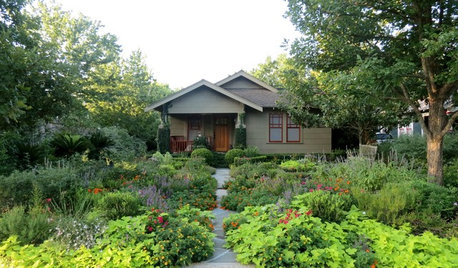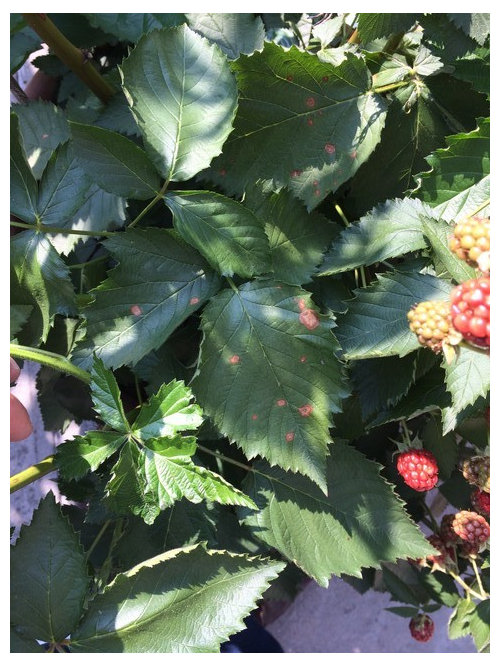Blackberry rust?
queensinfo
9 years ago
Related Stories

FENCES AND GATESHow to Choose the Right Fence
Get the privacy, security and animal safeguards you need with this guide to fencing options
Full Story
GARDENING AND LANDSCAPINGGrow a Lush Privacy Screen
No need to wait forever for patio privacy the green way. These 10 ideas will get your screening up and running in no time
Full Story
GARDENING GUIDESHow to Keep Your Citrus Trees Well Fed and Healthy
Ripe for some citrus fertilizer know-how? This mini guide will help your lemon, orange and grapefruit trees flourish
Full Story
COLOR9 Dark Wall Colors to Suit Your Mood
Tired of light and airy? Try dark and moody for a change; you may be surprised by the moods these colors inspire
Full Story
GARDENING GUIDESYes, You Can Grow Food in a Shady Yard
Your shady garden doesn’t have to be forever barren. Berries, herbs and other shade-loving plants can produce a delicious bounty
Full Story
FALL GARDENING7 Reasons Not to Clean Up Your Fall Garden
Before you pluck and rake, consider wildlife, the health of your plants and your own right to relax
Full Story
FUN HOUZZDoes Your Home Have a Hidden Message?
If you have ever left or found a message during a construction project, we want to see it!
Full Story
EDIBLE GARDENSHow to Add an Apple Tree to Your Edible Garden
Readily available, beautiful and fragrant, apple trees offer four-season interest along with crisp, juicy fruit
Full Story
FRONT YARD IDEAS12 Surprising Features Found in Front Yards
Fire, water, edibles and wildlife habitats are just a few of the elements you can consider adding to your entryway landscape
Full Story








queensinfoOriginal Author
drew51 SE MI Z5b/6a
Related Professionals
Derry Landscape Architects & Landscape Designers · Benbrook Landscape Architects & Landscape Designers · La Marque Landscape Architects & Landscape Designers · Simi Valley Landscape Architects & Landscape Designers · Belvedere Park Landscape Contractors · Fort Mill Landscape Contractors · Hawaii Landscape Contractors · La Verne Landscape Contractors · Louisville Landscape Contractors · Mount Sinai Landscape Contractors · New Berlin Landscape Contractors · North Canton Landscape Contractors · North Lauderdale Landscape Contractors · Seven Hills Landscape Contractors · Wethersfield Landscape Contractorsjtburton
queensinfoOriginal Author
drew51 SE MI Z5b/6a
drew51 SE MI Z5b/6a
jtburton
Molex 7a NYC
drew51 SE MI Z5b/6a
jtburton
queensinfoOriginal Author
drew51 SE MI Z5b/6a
jtburton
queensinfoOriginal Author
queensinfoOriginal Author
jtburton